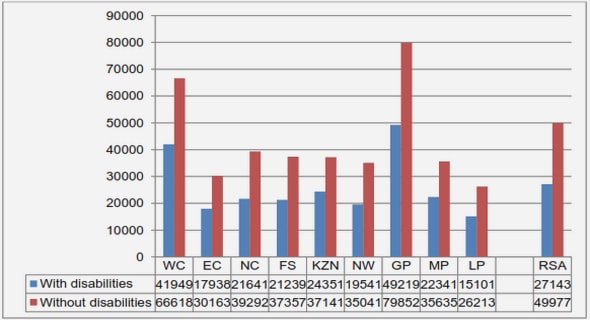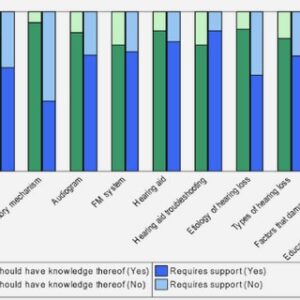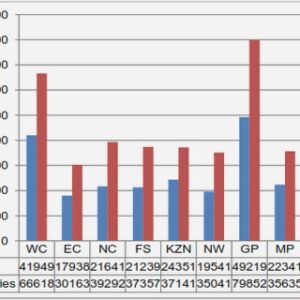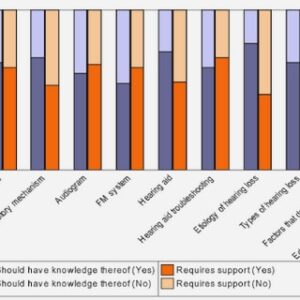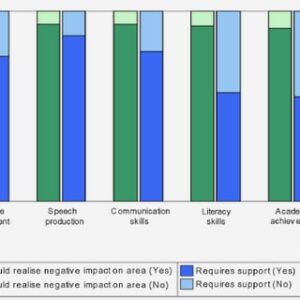(Downloads - 0)
For more info about our services contact : help@bestpfe.com
Table of contents
Part 1. Objectives of study and methods applied
Chapter 1. Introduction and objectives
1.1 Concept of hydromorphism
1.2 Types of hydromorphism depending on its origin
1.3 Hydromorphism caused by soil compaction
1.3.1 Soil compaction and its causes
1.3.2 Voluntary soil compaction and non voluntary soil compaction
1.3.3 Effects of soil compaction
1.4 Redox potential as an indicator of hydromorphic conditions
1.4.1 Heterogeneity in redox conditions in the soil
1.5 Factors affecting the hydromorphism and redox conditions of the soil
1.5.1 Soil oxygenation
1.5.2 Organic matter
1.5.3 Microorganisms
1.6 Effects of redox reactions on the soil
1.7 Effect of crop residual management practices on redox conditions
1.8 Interest and objectives of the study
1.9 Order of presentation of work
Chapter 2 Material and Methods
2.1 Methods of soil study
2.1.1 X-Ray diffraction
2.1.2 Selective extraction of iron oxides
2.2 Methods of aqueous study
2.2.1 In situ long term measurements by multiparametric probe
2.2.2 Manual Sampling of aqueous solutions
2.3 Use of graphical language TestPoint for alkalinity measurements
2.3.1 Introduction, interest and principle of TestPoint language
2.3.2 Verification of pH electrodes using high resolution voltmeter
2.3.3 Measurement of alkalinity by calibrated pH electrodes
2.4 Conclusion
Part 2. Hydromorphic conditions in the rice culture
Chapter 1. Presentation of studied area in Camargue
1.1 Camargue
1.1.1 Geology of the Rhône delta
1.1.2 Geomorphology and geography of the Rhône delta
1.1.3 Hydrogeology of Rhône delta
1.1.4 Pedology of Rhône delta
1.1.5 Climate of Rhône delta
1.1.6 Ecology of Rhône delta
1.1.7 Rice cultivation in Camargue
1.1.8 Major processes in the rice growing field
1.1.9 Mineralogy of rice cultivated soils in Camargue
1.2 Characteristics of the studied plots
1.3 Conclusion
Chapter 2 Dynamics of physical parameters of surface waters in rice culture by multiparametric probe
2.1 Introduction
2.2 Effects of the crop residual management practices on the evolution of the physical characteristics during rice culture
2.2.1 Major differences and similarities in physical parameters
2.2.2 Evolution of the temperature during the rice culture in three plots
2.2.3 Evolution of EC during the rice culture in three plots
2.2.4 Evolution of the pH during the rice culture in three plots
2.2.5 Evolution of the redox potential during the rice culture in three plots
2.3 Effect of the major events on the evolution of the physical characteristics during rice culture
2.3.1 Hydraulic and other management practices
2.3.2 Meteorological events during rice culture
2.4 The pe-pH diagram to calculate the stability fields of different forms of iron during the rice cultivation period
2.4.1 The effect of variations in pe-pH on different forms of iron in three plots
2.4.2 Different stages in the variations of pe-pH in rice culture
2.5 Interpretations and discussions
2.5.1 Redox potentials
2.5.2 pH
2.5.3 Electrical conductivity (EC)
2.5.4 Microbial activity and temperature in soil solutions
2.6 Presence of phasing and dephasing in the physical parameters
2.6.1 Fourier analysis
2.6.2 Covariance analysis
2.7 Conclusion
Chapter 3 Physico-chemical properties of surface waters during day cycle
3.1 Introduction
3.2 Evolution of physical characteristics at different stages
3.2.1 The redox potentials presented as electron activity (pe)
3.2.2 The pH
3.2.3 Temperature
3.2.4 Electrical conductivity (EC)
3.3 Comparison of probe and multimeter measurements in SS
3.3.1 Difference in redox potentials
3.3.2 Difference in pH
3.3.3 Difference in temperature
3.3.4 Difference of electrical conductivity (EC)
3.3.5 Relation between T, pH, pe and EC
3.4 Evolution of unstable elements at different stages
3.4.1 Reduced iron (Fe2+)
3.4.2 Ammonium (NH4 +)
3.4.3 Nitrite (NO2 -)
3.5 Evolution of anions at different stages
3.5.1 Chloride (Cl-)
3.5.2 Bromide (Br-)
3.5.3 Sulphate (SO4 2-)
3.5.4 Fluoride (F-)
3.5.5 Nitrate (NO3 -)
3.6 Evolution of cations at different stages
3.6.1 Calcium (Ca2+)
3.6.2 Magnesium (Mg2+)
3.6.3 Potassium (K+)
3.6.4 Total iron (Fe)
3.6.5 Manganese (Mn)
3.6.6 Zinc (Zn2+)
3.6.7 Sodium (Na+)
3.6.8 Aluminium (Al3+)
3.7 Evolution of silicon and alkalinity at different stages
3.8 Evolution of dissolved organic carbon (DOC) at different stages
3.9 Synthesis of results
3.10 Interpretations and discussions
3.10.1 Impact of biotic factors on physical parameters
3.10.2 Interaction between air temperature and physical parameters
3.10.3 Statistical approach by using the correlations of different parameters .
3.10.5 The processes affecting the evolution of the elements at different stages
3.10.6 Evolution of chemical properties of surface waters
3.10.7 Transfer of elements between SS and LS
3.11 Conclusion
Chapter 4 Thermodynamic approach to physico-chemical parameters
4.1 Introduction
4.2 The pe-pH diagram to show the rhizosphere effect
4.3 Thermodynamic calculations using software PHREEQC
4.3.1 Calculation of index of saturation
4.3.2 Presentation of PHREEQC
4.4 Evolution of ionic strength at different stages of rice culture
4.5 Effect of post harvest practices in the rice culture on the pCO2
4.6 Effect of different post harvest practices on the SI of iron minerals
4.7 The evolution of SI of different minerals in rice culture
4.7.1 Calcite (CaCO3)
4.7.2 Aragonite (CaCO3)
4.7.3 Dolomite (CaMg(CO3)2)
4.7.4 Anhydrite (CaSO4) and Gypsum (CaSO4: 2H2O)
4.7.5 Smithsonite (ZnCO3)
4.7.6 Pyrochroite (Mn (OH)2) and Rhodochrosite (MnCO3)
4.7.7 Manganite (MnOOH)
4.7.8 Quartz (SiO2) and Chalcedony (SiO2)
4.7.9 Halite (NaCl)
4.7.10 Fluorite (CaF2)
4.7.11 Talc (Mg3Si4O10(OH)2)
4.7.12 Saturation indexes of soil clay minerals in rice culture
4.7.13 The SI of phosphate minerals
4.8 The SI of minerals without rhizosphere effect on physical parameter
4.8.1 Effect of rhizospheric activity absence on Iron minerals
4.8.2 Effect of rhizospheric activity absence on other minerals and pCO2
4.9 Comparison of SI for some minerals in R 204 with other plots
4.10 Conclusion
Chapter 5 Kinetics of pH in rice culture under hydromorphic conditions
5.1 Introduction
5.2 Interpretations of pH at equilibrium or “pH stat”
5.3 Calculations of time of relaxation for all plots
5.4 Daily variations during the study of pH kinetics
5.4.1 Time of relaxation for daily pH kinetics for plot R
5.4.2 Relation of pH and other physical parameters for R
5.5 Interpretations and discussions
5.6 Conclusion
Conclusion Part 2
Part 3 Hydromorphic conditions in forest soils due to mechanical soil compaction
Chapter 1 Presentation of site and problem description
1.1 General presentation of site
1.1.1 Climate of site
1.1.2 Soil characteristics
1.1.3 Preparation of site
1.1.4 Instrumentation of site for in situ, long term measurements
1.1.5 Evidence of hydromorphic degradation of soil after soil compaction.
1.2 Presentation of selected block
1.3 Conclusion
Chapter 2 Results obtained by X-ray diffraction
2.1 Major identified minerals in soil samples
2.2 Percentage of organic and non-organic carbon in different profiles
2.3 Identification of different clay minerals in soil samples
2.4 Comparison of different profiles for their clay minerals
2.5 Quantification of clay minerals in different soil profiles
2.6 Conclusion
Chapter 3 Effect of soil compaction on the reactivity of iron oxides
3.1 Kinetics of extraction in compacted and non-compacted soils
3.2 Association of elements in soil profiles
3.3 Effect of soils compaction on kinetics of selective chemical extraction
3.4 Extracted elements concentrations at various depths in all soil profiles
3.5 Conclusion
Part 4 Conclusion and perspectives
1. Conclusion
1.1 Site characteristics
1.2 Material and methods used
1.3 Use of multiparametric probe in rice culture
1.3.1 Evolution of physical parameters in rice culture
1.3.2 pH control in rice culture
1.3.3 Periodicity and relation among physical parameters
1.3.4 Effects of anthropic actions and meteorological events in rice culture
1.3.5 Effect of different post-harvest methods on the physical parameters
1.4 Effect of rhizospheric activity on physico-chemical parameters
1.5 Chemical composition of surface waters in paddy plots
1.6 Effect of Post harvest practices on physico-chemical parameters
1.7 Diurnal patterns in physico-chemical parameters in rhizosphere
1.8 Major chemical processes controlling the elements concentrations
1.9 Nature of hydromorphism in compacted forest soils
2. Perspectives
2.1 Automation of data acquisition
2.2 Hydromorphic conditions in rice culture and forest
Part 5 : Annexes
Annex 1: Chemical analysis of rice plots (source: Cassard R, 2009)
Annex 2: Chemical analysis of soil of Azerailles (Haut Bois) (source: Ranger and Brethes 2008).
Annex 3: X- ray diffraction (diffractograms) for clay minerals of compacted soils (T) and non compacted soils (C) of Nancy.
Annex 4: Interview with farmer about major field operations in paddy plots (R 178 and R 179) of Camargue (Source: Cassard R, 2009)
Annex 5: Chemical composition of surface waters of Camargue: (soil solution (SS) and surface water layer (LS)), and results of chemical selective extraction by reagents CB-CBD are available in computer format on demand.
References
